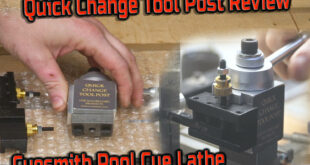So sometimes social media can be good for something other than making you want to pull your hair out at all the political post and cat memes. While on social media the other day I wound up in the middle of a discussion asking the question of is a Track Saw worth the investment. The main thread was started by a gentleman asking the question of if any of the members of the group owns or has used a particular track saw. This quickly lead to comments descending into madness. With some in the comments going quite off the rails as to calling a track saw a gimmick. Some even saying he should learn to cut in a straight line and more. This to me is insane. While yes I completely agree that you should learn to use tools to there full extent and get the best you can be with them. Saying that the use of a more accurate and more fool proof tool somehow means you have less skill makes not sense to me. Using a tool that is new or is designed to make a cut more accurate or make a cut with less likelihood of a mistake is just that a tool. Think of it this way. If you are a good woodworker with unreliable or less than accurate tools. Imagine what you can archive with tools that will never fail you and are even more precise.
With this in mind and during this discussion I thought to myself I wonder If I could make a true comparison in a Circular Saw and a Track Saw. So that is what I set out to do.

First off I want to say this is not going to be a detailed review of these particular tools. I would like to look more at the functional differences both advantages and disadvantages of each of theses tool as it pertains to the design of these styles of tools. I will be going over a few of the specifics of each of the tools and also how some of there features work.


Starting off with the Circular Saw. This is the Dewalt DCS570B it is a 7 ¼ inch circular saw. This saw is a 20 volt battery powered saw. This saw has a 2 9/16 inch cut depth. This saw is a great saw and has lots of power and its brushless motor has a lot of torque and a long battery life. There are a few pros as well as cons with circular saws like this. I also want to cover some of the functionality differences with a Circular Saw compared to a Track Saw. First off the Circular Saw is made to make straight cuts from one edge of a material to the opposite edge. Cut like rip cuts and cross cuts are made easily with a circular saw. It start a cut with a circular saw you first start with the blade off of the edge of the material and only a small section of the base supporting the weight on the edge of the material.

This to me is also one of the flaws of this type of saw. You are holding a rotating blade off of the material and it is easy for the saw to slightly slip or veer slightly off of your intended path. This to me is also a safety point for this type of saw. If for whatever reason at this point your hand twists or if for some reason the saw kicks back you can have a hard time controlling the saw with only a portion of the blade within the material.


The next point with circular saws are that most of them do not have dust collection. While some of the other very high end saws might have this feature as well some sort of kick back protection most circular saws do not. This can be a major problem if you are working within an enclosed area such as a house or within a workshop. Another feature of note is setting the depth of cut. To do this on a circular saw you actually lift the base plate up allowing for a deeper depth of cut. This also means you need to physically set the saw onto the material and lower the blade to the desired depth of cut.


As for how to line up a cut with a circular saw you have two options. One is to free hand your cut with a line on the material using the guide notch on the base of the saw. This is a standard feature on pretty much all circular saws. The next is to use a guide to ensure a straight cut. Due to how the saw cuts this is a process that is not as simple as just mark where you want the blade to to and cut. You have to allow for the difference in the width of the base plate ( witch rides along the guide) to the blade. This can be different distances depending on the saw that you have. In the case of the Dewalt it is exactly 5 inches from the edge of the base plate to the inside cutting edge of the blade. So if you are cutting from the proper side of the material edge with the guide you will need to measure and place the guide 5 inches more from the edge of the material then where you would like the blade to pass. While this is not a deal breaker it is a massive pain to me. Any time you try to ass steps or extra processes there is more of a chance to make a mistake or for something to go wrong. This is the main reason why I do not use this saw for finishing cuts.
With that being said for quick cuts disassemble things like pallets or anything you are trying to just quickly downsize this is a fantastic saw. Also you can make precise cuts with it there is just more of a chance for mistakes and more measurements that will need to be double checked during the process before the cut. This style of saw also is usually very light and easy to use.

Next I want to look at the Track Saw the saw I am using in this comparison is the Delta DCS520ST1 60 volt battery powered Track Saw with 59 inch track. This saw has a 6 ½ inch blade with a maximum cutting depth on the track of 2 1/8 inches. Just like with the circular saw this saw also has it pros and cons. Though with this style saw I will say I find it much more useful and convenient than the circular saw. Even with its few cons.

I first want to talk about how this saw works. Unlike the circular saw you do not suspend the blade off of the material before making the cut. The saw is placed on the track and entire weight of the saw is rested on the track with the blade retracted into the guard. When you are ready to make the cut you engage the blade and then plunge the blade vertically into the material. This has a couple of benefits in of its self. This feature allows you to make cut in the center of material that you would not normally make with a standard circular saw. Though the argument can be made that you can make this type of cut with a circular saw it is much more dangerous to do so than with a plunge cut track saw.


To set the depth of cut on the Track Saw you simply adjust the depth gauge on the saw. Most track saws have something similar ( though maybe not exactly the same). The gauge is set to the depth you would like to cut and these can be very accurate. There is no physically lowering the blade to adjust the depth of cut.


Another great feature of the track saw is the safety features. Most track saws have some form of kick back protection as well as plunge locks stopping the saw from plunging down or the saw blade from starting to spin. The kick back feature is very nice in that if for some reason the saw kicks back the stop will catch on the track and stop the saw from being thrown back at you. Any time there are extra safety feature this cannot be seen as a bad thing. The final feature that is a major pro is the dust collection. With the track saw the dust collection port can be attached to a sop vac or to a dust collection system. This makes for a much cleaner work area.


The track itself is another aspect of the saw. It is also a major part of this type of saw. The track is what allows you to achieve extremely accurate and straight cuts. The track also does not require clamping down. It uses Soft rubber non skid pads on grip the material and stop the track from moving once you apply pressure during the cutting process with the saw. This makes the process very fast and almost fool proof. Just lay the edge of the track on your mark and make the cut.
There are how ever some draw backs to the saw when compared to most circular saws. The track saw is a bit heaver. The weight makes it a tab bit less agile. Like any machine with multiple moving parts a track saw it a bit more susceptible to dust build up and there can require a bit more maintenance to ensure proper operation.




In the video I show the process of making a cut first the with Circular Saw. I went through the steps of making a cut. Starting with marking the cut on both sides of the material at the proper position for the guide and saw. I then placed the guide into place aligning it with the marks and clamping in into place ensuring that the guide would not move during the cut. I then set the saw to the proper depth of cut for the material and proceeded to make the cut. All in all this process took 2 minutes and 12 seconds. While someone who does this a lot I am sure could do it faster I thought this was a accurate representation of the time it takes for each one of these cuts with a circular saw. While a little over two minutes does not seem like to much it can add up really quickly when making multiple cuts.




I then repeated this process with the Track Saw. The procedure is still the same. Marking your cut, positioning the track and then making the cut. This however is much much faster and easier with the Track Saw. Instead of spending time clamping down the track the track is simply lined up with the marks on the material and then the cut can be made. Even setting the depth on the saw takes only a couple of seconds. The same cut made with the track saw was made in less than half of the time that it took with the circular saw. Taking only 53 seconds to complete the cut.
Thumb
In conclusion both of these saws are great and have some great arguments that can be made for there use. With that being said I would have to say the track saw is by far more useful to me. Not only are cut cuts easier and faster to make they can also be much cleaner as the track helps to prevent chip out as well as prevent the saw from getting off course. I do love my dewalt tools both of these included. Both of these tools have there place and uses.
What do you think? What tool do you prefer? What tools would you like to see me compare next?
Thank you for watching and reading I hope you found it helpful. Make sure to sign up for the Jpayne Woodworking newsletter to keep up with all of the new articles, products, new and more that comes out. Also make sure to subscribe on youtube and follow me on Instagram for more videos and photos. Thanks again an I will see you on the next one.
 JPayne Woodworking Creative Craftsmanship
JPayne Woodworking Creative Craftsmanship



